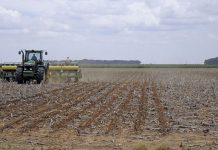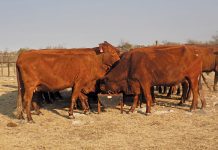Solving the country’s agrilogistics problems has been likened to taming a dinosaur. The Departments of Agriculture and Transport, along with various agriculture and logistics stakeholders, recently held a workshop to discuss the status of agrilogistics in SA.
Cabinet instructed the Department of Transport to find a solution in the form of the National Freight Logistic Strategy. The Department of Agriculture decided to follow suit and formulated the agrilogistics strategy. But before it can be implemented it must be tested and so the workshop was held to come up with a proposal to make the strategy work.
“The problem is the inability to fulfil the demand for cargo movements at prices that are competitive, with desired levels of service and quality within acceptable levels of reliability in a manner that supports other policy imperatives,” said Billy Morokolo, marketing director for the Department of Agriculture.
He said the observed agrilogistics trends included a definite movement from rail to road. “Infrastructures are linked to rail but the rail is inefficient and the connectivity suffers. Road is between R60/t and R70/t more expensive than rail. There is under-utilisation, up to 90%, of branch lines to move bulk commodities. The congestion at ports and borders during peak times is a big problem. Nearly 55 million tons of agricultural cargo are moved across the country at a logistics cost of R17 billion per annum. Transport costs comprise about R7,8 billion of that amount,” said Morokolo.
According to the strategy findings, agricultural freight is increasing at about 17% per annum compared with mining (5%) and manufacturing (9%) and it is projected to grow by between 11% and 30% between now and 2014. “This is a good scenario but it is more than likely that the logistics system will be unable to cope in the long term without additional investments in freight infrastructure,” he said.
Several stakeholders and service providers including Spoornet, the Perishable Product Exports Control Board, SA Sugar Association Logistics, the Maputo Corridor Logistics Initiative and the SA Agricultural Processors’ Association discussed the services on offer and the logistical needs that have to be met. Once the extent of the problem was brought home, some detail of the proposed plan was highlighted.
Integrated planning and forecasting was at the top of the wish list. “The use of road and rail infrastructure has to be optimised and we have to track and monitor performance. Corridor volumes need to be aggregated and consolidated. The cost of corridor transport should also be reduced,” said Morokolo.
After many rounds of complaints, challenges and demands, it was decided that all stakeholders had to assist with the collection of real-time information, intelligence and forecasts to create a realistic list of needs that will be handed to the Department of Transport for consideration. – Cornelia du Plooy








